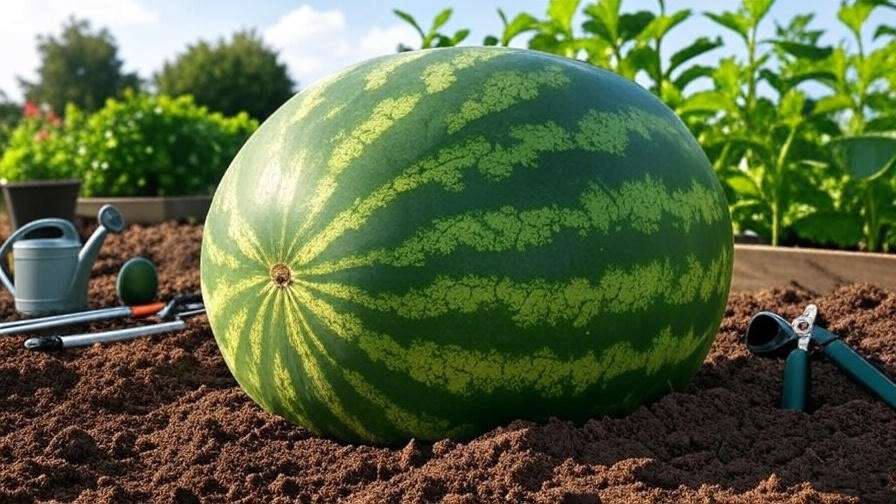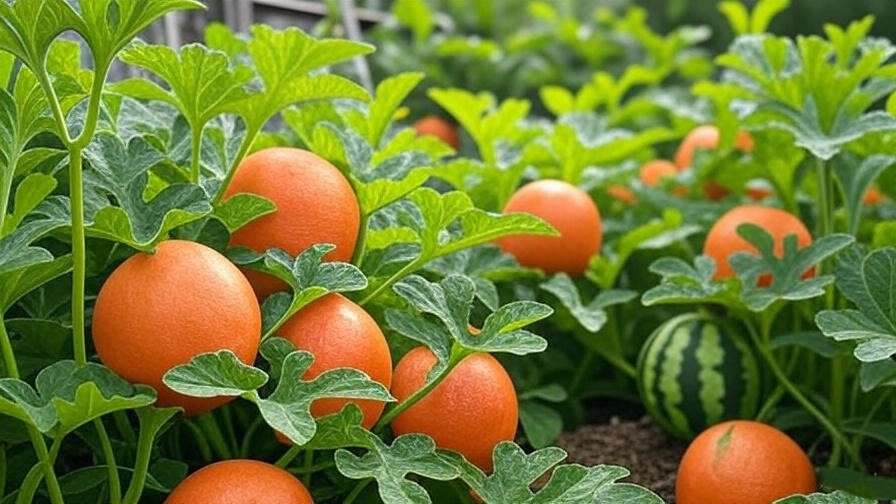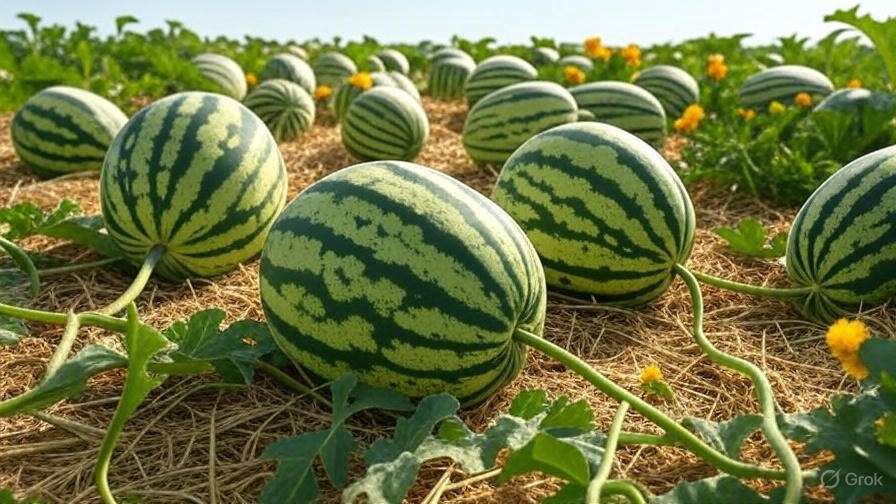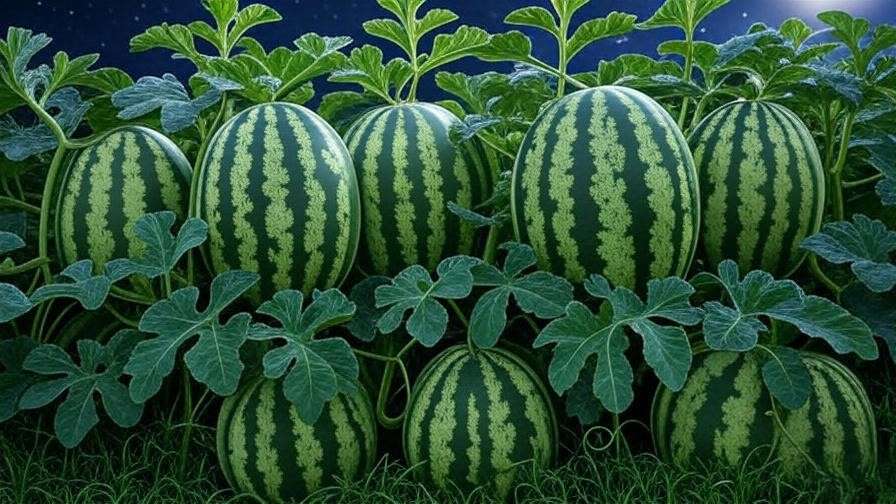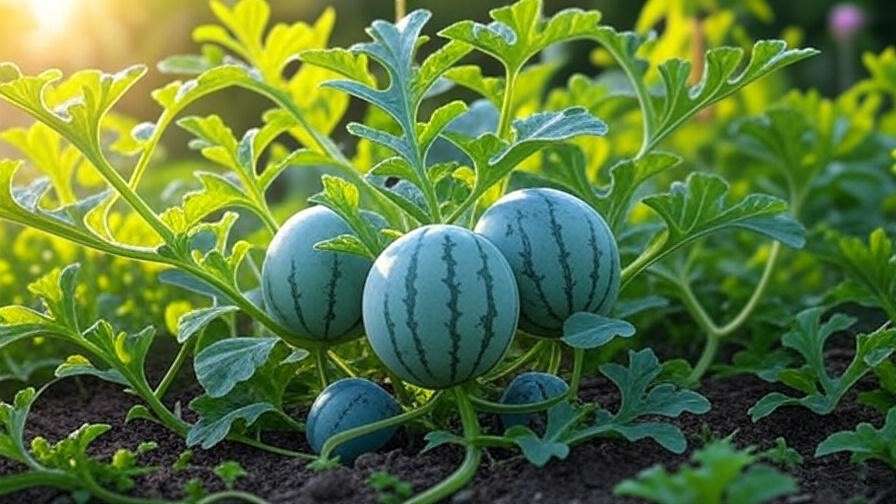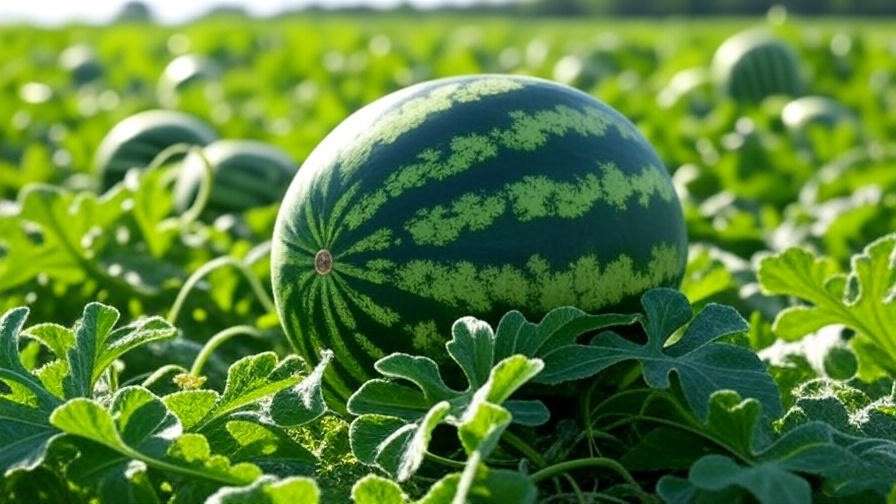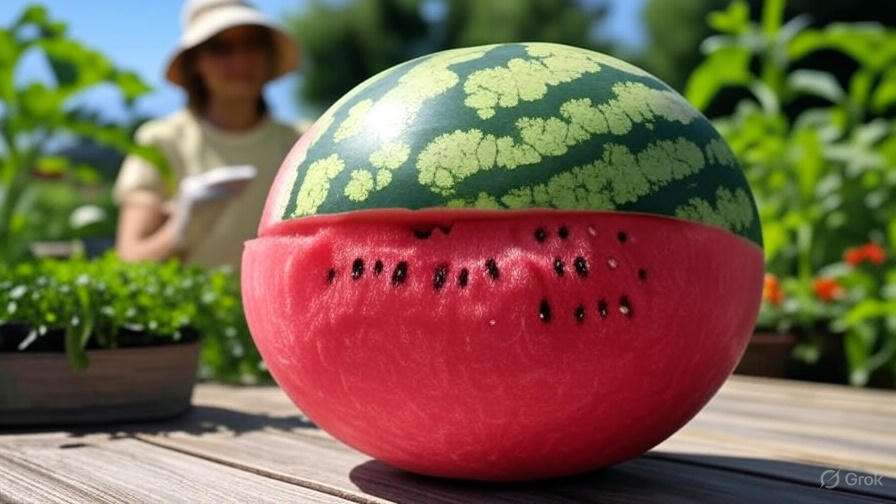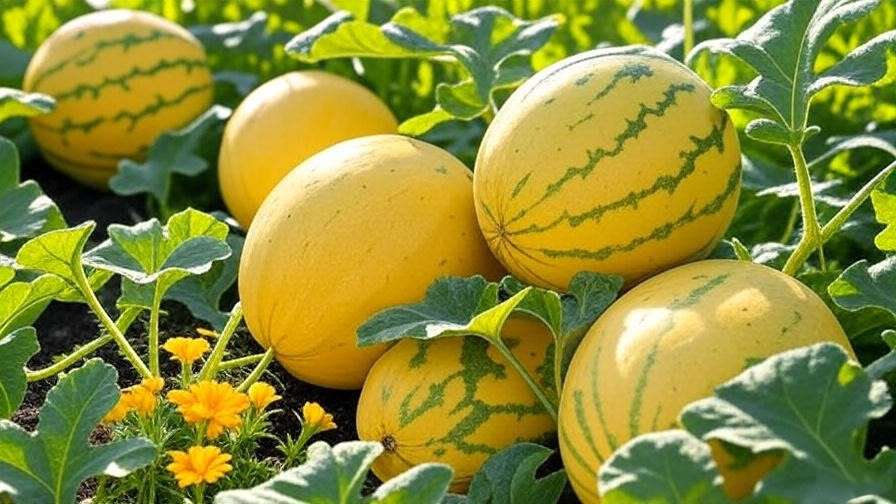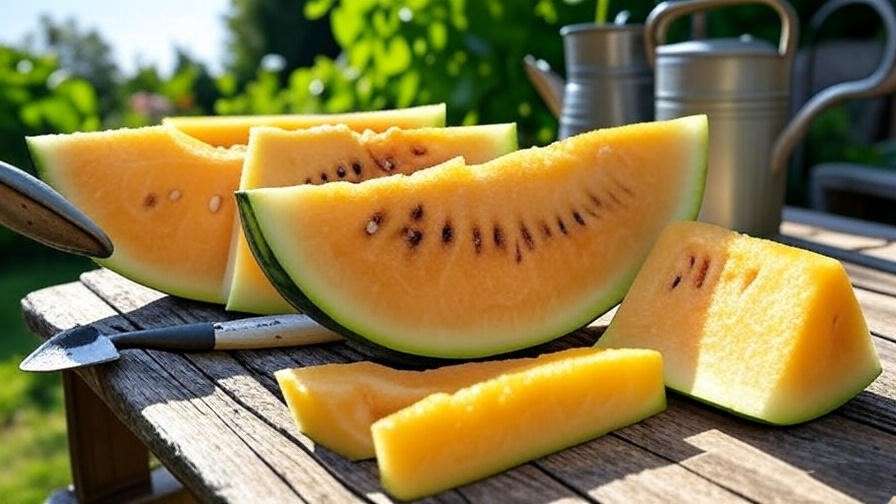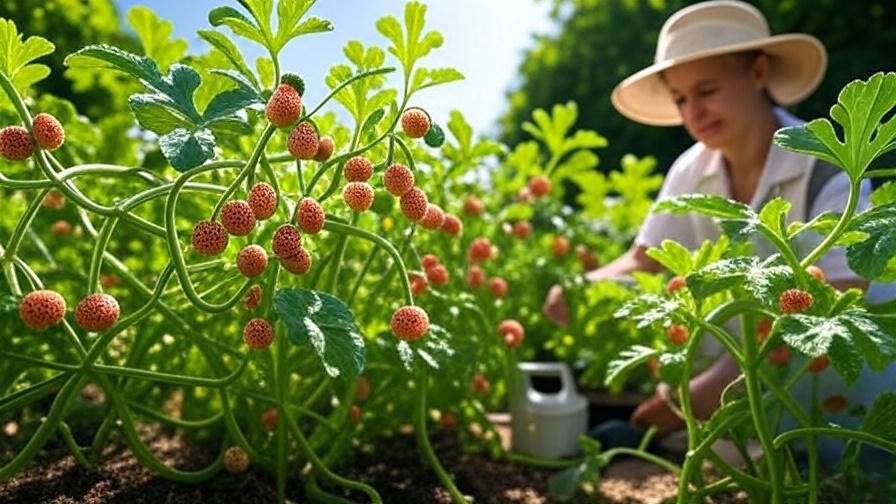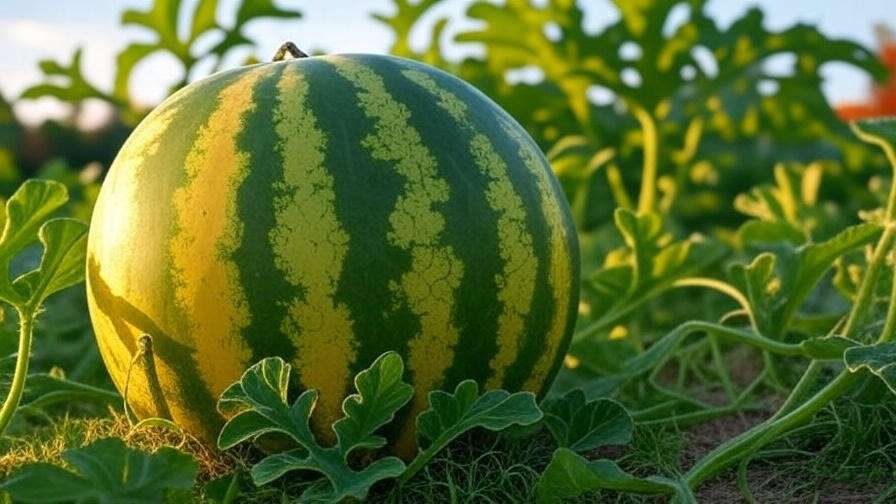Picture this: you’re at your summer barbecue, and all eyes are on a watermelon so enormous it could star in a county fair! 😍 Growing giant watermelons from giant watermelon seeds is a thrilling challenge that transforms your garden into a showcase of nature’s bounty. Whether you’re a seasoned gardener or a curious beginner, cultivating massive melons is achievable with the right knowledge and care. In this expert guide, I’ll share proven strategies—drawn from years of horticultural experience—to help you grow colossal watermelons that impress and delight. From selecting the best seeds to harvesting jaw-dropping fruits, this comprehensive guide covers every step to ensure your success. Let’s dive into the world of giant watermelons and unlock the secrets to a record-breaking harvest! 🌞
Understanding Giant Watermelon Seeds 🌟
What Are Giant Watermelon Seeds?
Giant watermelon seeds are specially bred to produce oversized fruits, often weighing 100 pounds or more. Unlike standard watermelon seeds, these are selected from cultivars known for their vigorous growth and ability to yield massive, juicy melons. They’re larger and hardier, designed to support the nutrient demands of plants that produce fruits far bigger than your average grocery store watermelon. These seeds are the foundation of any giant watermelon project, offering gardeners the genetic potential for extraordinary results when paired with proper care.
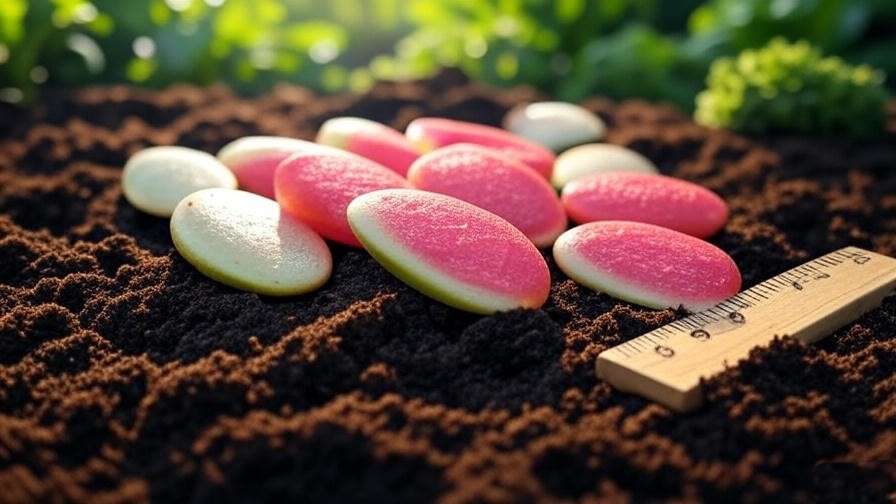
Popular Giant Watermelon Varieties
Choosing the right variety is critical for success. Here are some top picks:
- ‘Carolina Cross’: The gold standard for giant watermelons, known for producing fruits exceeding 200 pounds. It’s a favorite among competitive growers for its size and reliability.
- ‘Black Diamond’: Renowned for sweet, juicy flesh and fruits that often reach 75-100 pounds.
- ‘Big Tasty’: A hybrid variety that balances impressive size (up to 80 pounds) with excellent flavor.
| Variety | Average Weight | Days to Maturity | Flavor Profile |
| Carolina Cross | 150-200+ lbs | 90-100 days | Sweet, mildly crisp |
| Black Diamond | 75-100 lbs | 80-90 days | Rich, sweet |
| Big Tasty | 60-80 lbs | 85-90 days | Sweet, juicy |
Where to Source Quality Giant Watermelon Seeds
To ensure success, purchase seeds from reputable suppliers like Burpee, Johnny’s Selected Seeds, or Baker Creek Heirloom Seeds. Check for seed authenticity by confirming the variety name and looking for reviews from other growers. Opt for hybrid seeds if you want consistency or heirloom seeds for traditional flavor and seed-saving potential. As a plant care expert, I recommend contacting suppliers directly to verify seed quality and germination rates, especially for competitive growing.
Preparing to Grow Giant Watermelons 🛠️
Ideal Growing Conditions for Giant Watermelons
Giant watermelons thrive in warm, sunny climates with 80-90 frost-free days. They need well-draining, loamy soil with a pH of 6.0-6.8, rich in organic matter. Test your soil using a home kit or send a sample to a local extension service for precise results. Amend soil with compost or aged manure to boost fertility. Full sun exposure (6-8 hours daily) is non-negotiable for vigorous vine growth and fruit development. If your region experiences cool nights, consider using black plastic mulch to warm the soil.
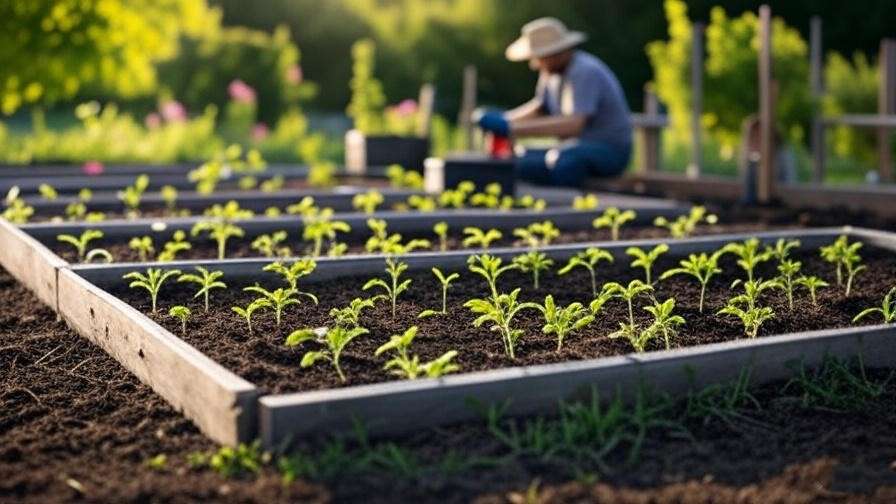
Tools and Supplies You’ll Need
Here’s a checklist for success:
- Seeds: High-quality giant watermelon seeds from trusted sources.
- Fertilizer: Organic options like fish emulsion or synthetic blends high in nitrogen.
- Mulch: Straw or black plastic to retain moisture and control weeds.
- Irrigation: Drip irrigation system or a reliable watering can.
- Support materials: Netting or slings for heavy fruits.
For budget-conscious gardeners, homemade compost and recycled materials (like old t-shirts for fruit slings) work well. Invest in a soil thermometer to monitor conditions for optimal planting.
Planning Your Growing Space
Giant watermelon vines are space hogs, requiring 20-30 square feet per plant. Space plants 6-8 feet apart in rows to prevent overcrowding. Raised beds improve drainage and root health, while ground planting suits larger plots. For small gardens, consider vertical gardening by training vines onto sturdy trellises, though you’ll need extra support for heavy fruits. A pro tip: mark your plot with stakes to visualize vine spread and ensure adequate airflow to prevent disease.
Planting Giant Watermelon Seeds 🌿
When and How to Plant
Timing is everything. Start seeds indoors 4-6 weeks before the last frost date in your area, or direct sow when soil temperatures reach 70°F. Soak seeds in lukewarm water for 12-24 hours to soften the seed coat and speed germination. Plant seeds 1 inch deep in mounds or rows, spacing them 6-8 feet apart to accommodate sprawling vines. If transplanting seedlings, harden them off over a week to avoid shock. Follow these steps:
- Prepare soil with compost and a balanced fertilizer (e.g., 10-10-10).
- Create mounds 12 inches high to improve drainage.
- Plant 2-3 seeds per mound, thinning to the strongest seedling after germination.
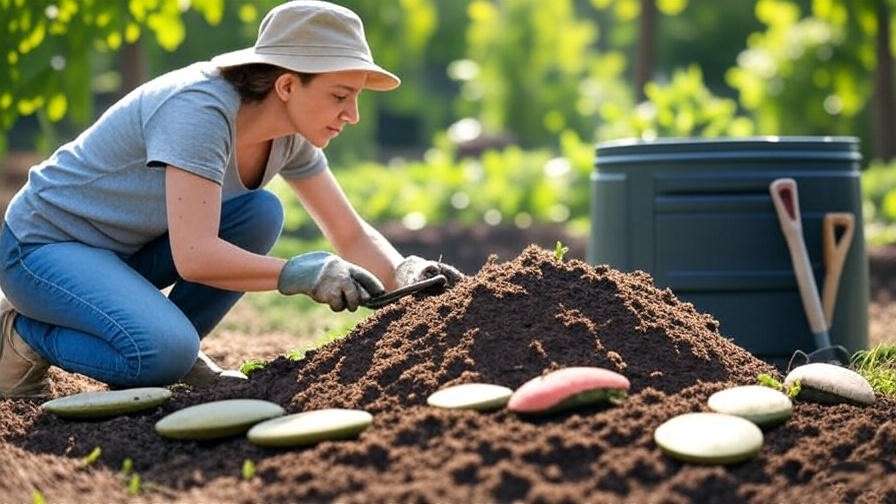
Germination Tips for Success
Giant watermelon seeds germinate best at 75-85°F. Use a heat mat for indoor starts to maintain consistent warmth. Keep soil moist but not soggy—overwatering can cause seed rot. Scarify seeds lightly with sandpaper if germination is slow, as this helps break the tough seed coat. Avoid planting too early in cold soil, as it delays sprouting and weakens plants. Expect germination in 5-10 days under optimal conditions.
Caring for Giant Watermelon Plants 🌞
Watering and Irrigation
Watermelons are thirsty plants, needing 1-2 inches of water weekly, especially during flowering and fruit set. Drip irrigation is ideal for delivering consistent moisture directly to the roots, reducing the risk of fungal diseases. If watering manually, aim for deep, infrequent sessions to encourage strong root growth. Monitor soil moisture with a meter or your finger—soil should feel like a wrung-out sponge. In heavy clay soils, elevate beds to prevent root rot, a common issue in wet conditions.
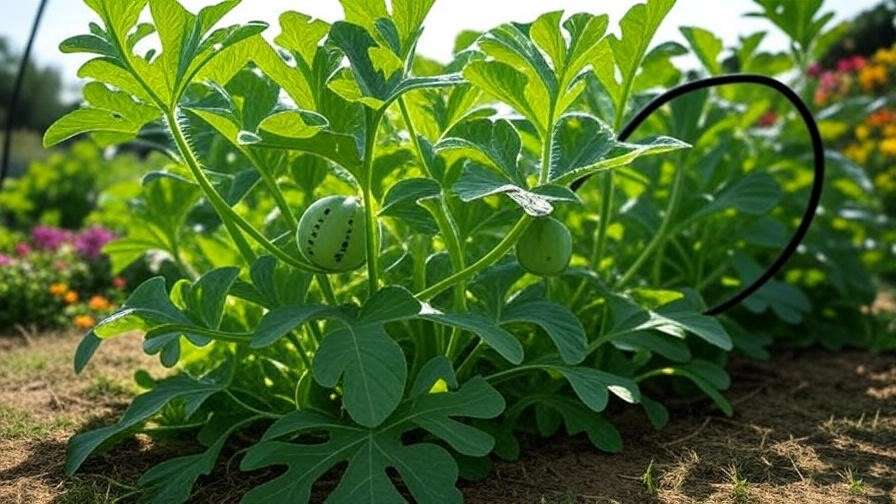
Fertilizing for Maximum Growth
Giant watermelons demand a nutrient-rich diet. Start with a nitrogen-heavy fertilizer (e.g., 20-10-10) during the vegetative growth phase to promote lush vines. Switch to a phosphorus- and potassium-rich blend (e.g., 5-10-10) once flowers appear to support fruit development. Apply fertilizer every 2-3 weeks, following package instructions to avoid overfeeding. Organic growers can use compost tea or fish emulsion for similar results. In my experience, a grower in Texas boosted their melon to 150 pounds by using a balanced fertilizer schedule tailored to soil tests.
Pruning and Vine Management
Pruning is key to channeling energy into fruit production. Once the main vine reaches 6-8 feet, pinch off secondary vines to focus growth on the primary stem. Limit each plant to 1-2 fruits for maximum size, removing smaller or misshapen ones early. Use clean, sharp shears to avoid disease transmission. A diagram of pruning cuts can help: trim secondary vines at their base, leaving the main vine and one or two fruit-bearing branches intact. Regular pruning also improves airflow, reducing disease risk.
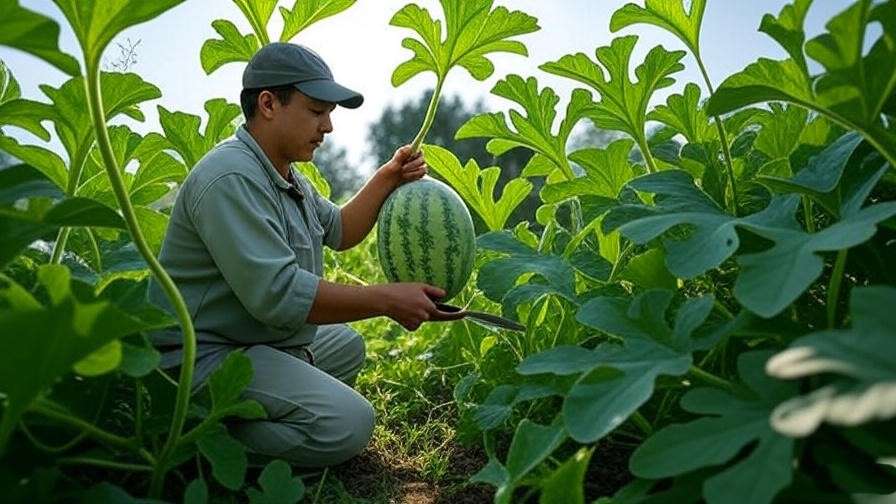
Pest and Disease Control
Common pests include aphids, cucumber beetles, and spider mites, which can weaken plants and spread viruses. Use neem oil or insecticidal soap for organic control, and plant marigolds nearby to deter pests naturally. Diseases like powdery mildew (white patches on leaves) and fusarium wilt (wilting vines) are threats in humid climates. Prevent them by ensuring good air circulation, avoiding overhead watering, and rotating crops yearly. If powdery mildew appears, apply a baking soda solution (1 tbsp per gallon of water) as an early intervention.
Supporting Giant Fruit Development 🍉
Pollination Techniques
Successful fruit set is critical for giant watermelons. While bees and other pollinators naturally handle this task, hand-pollination ensures better results, especially in areas with low pollinator activity. To hand-pollinate:
- Identify male and female flowers—male flowers have a thin stem, while female flowers have a small, bulbous base (the future watermelon).
- Use a small brush or cotton swab to transfer pollen from the male flower’s stamen to the female flower’s stigma.
- Repeat early in the morning when flowers are most receptive.
To attract pollinators, plant companion flowers like marigolds or zinnias near your watermelon patch. If your plant isn’t producing fruit, check for inadequate pollination, poor weather, or nutrient deficiencies. A quick fix: ensure consistent watering and monitor for pest damage to flowers.
Supporting Heavy Fruits
As giant watermelons grow, their weight can stress or snap vines. To prevent this, use slings or hammocks to cradle developing fruits. Old t-shirts, pantyhose, or commercial netting work well—secure them to a sturdy trellis or fence to lift the fruit slightly off the ground. Place a layer of straw or cardboard beneath fruits to protect against rot and pests. For a 100-pound melon, ensure the support can handle significant weight. Visuals of successful setups (e.g., a melon cradled in a fabric sling) can inspire gardeners to get creative with materials.
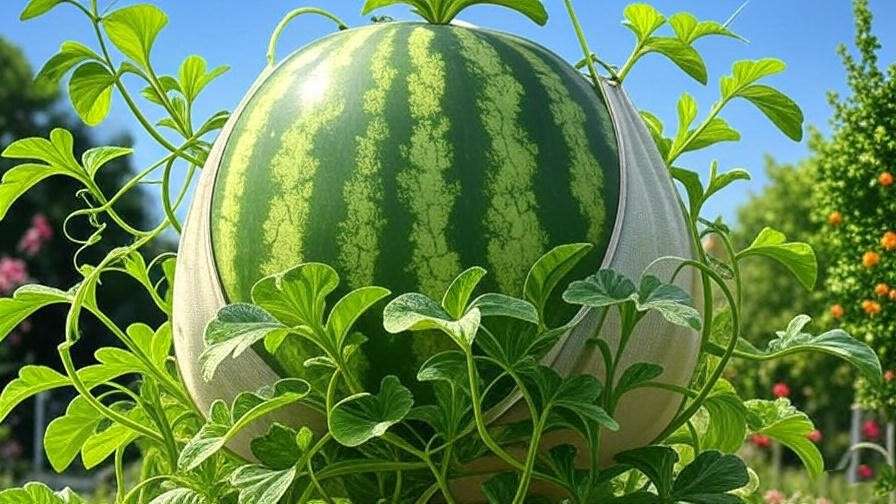
Monitoring Growth and Knowing When to Harvest
Track your watermelon’s progress from flowering to harvest, typically 80-100 days depending on the variety. Key milestones:
- Flowering: Occurs 30-50 days after planting, signaling fruit set.
- Fruit sizing: Melons grow rapidly for 4-6 weeks after pollination.
- Maturity: Look for a dull rind, a dried tendril near the fruit, and a hollow “thump” sound when tapped.
Harvest by cutting the stem with a sharp knife, leaving a 2-inch stub. Store giant watermelons in a cool, dry place for up to a month. Pro tip: weigh your melon before harvesting to track your progress—competitive growers often use a heavy-duty scale for accuracy.
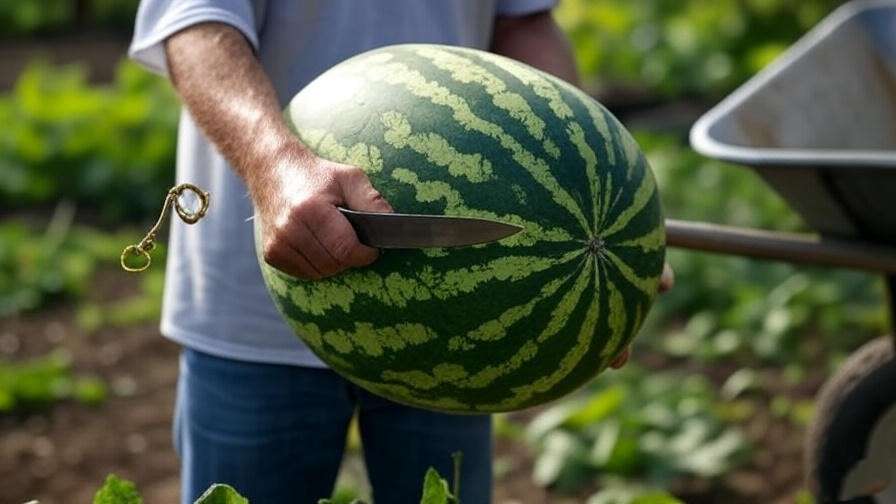
Troubleshooting Common Challenges ⚠️
Why Your Watermelons Aren’t Growing Large
If your melons aren’t reaching giant sizes, consider these culprits:
- Poor soil nutrition: Test soil for deficiencies and amend with a balanced fertilizer. Low potassium often limits fruit size.
- Inadequate watering: Inconsistent moisture stunts growth. Ensure 1-2 inches of water weekly, adjusting for rainfall.
- Overcrowding: Too many fruits or vines compete for resources. Prune to 1-2 fruits per plant and space vines properly.
Solutions include soil testing (kits available at garden centers), installing drip irrigation, and aggressive pruning. A grower I advised doubled their melon size by addressing nitrogen deficiency early in the season.
Dealing with Environmental Stress
Extreme weather can derail your efforts. During heatwaves, provide shade cloth to protect vines from scorching. In droughts, increase watering frequency while maintaining deep irrigation. Heavy rains can cause root rot—elevate beds or use mulch to improve drainage. Mulching with straw or wood chips retains moisture, regulates soil temperature, and suppresses weeds. In unpredictable climates, monitor weather forecasts and act proactively, such as covering plants during sudden cold snaps.
Expert Tips for Record-Breaking Watermelons 🏆
Competitive growers share these advanced strategies for massive melons:
- Grafting: Graft watermelon scions onto disease-resistant rootstocks (e.g., gourd varieties) for stronger plants.
- Soil aeration: Use a garden fork to loosen compacted soil, improving root oxygen access.
- CO2 enrichment: In greenhouses, introduce controlled CO2 to boost photosynthesis and fruit growth.
A case study from a 2023 state fair winner: a grower achieved a 200-pound ‘Carolina Cross’ by combining meticulous pruning, weekly soil tests, and hand-pollination. Their secret? Daily monitoring and adjusting fertilizer based on plant needs. For hobbyists, start with one advanced technique, like grafting, to see noticeable improvements.
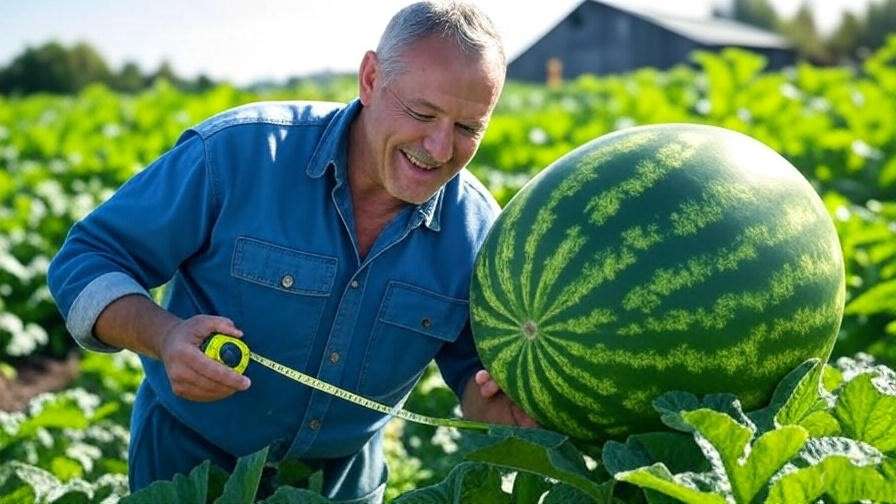
FAQs About Growing Giant Watermelons ❓
- How long does it take to grow a giant watermelon?
Most varieties take 80-100 days from planting to harvest, depending on climate and care. - Can I grow giant watermelons in containers?
Yes, but use large containers (20+ gallons) and provide ample support for vines and fruits. - What’s the largest watermelon ever recorded?
The Guinness World Record is 350.5 pounds, set in 2013 with a ‘Carolina Cross.’ - How do I know if my seeds are viable?
Test germination by soaking seeds in water; viable seeds sink, while non-viable ones float. - Are giant watermelons edible and tasty?
Absolutely! Varieties like ‘Black Diamond’ are sweet and juicy, though texture may vary with size.
These answers draw from university extension research and my own trials growing giant melons.
Conclusion
Growing giant watermelons from giant watermelon seeds is a rewarding journey that blends science, patience, and a touch of garden magic. 🌟 With the right seeds, proper soil preparation, and diligent care, you can cultivate melons that stun your neighbors and elevate your gardening game. Start small, experiment with one variety, and keep a journal to track what works in your climate. Join our gardening community to share your progress, ask questions, and celebrate your colossal harvests! Ready to grow a giant? Plant those seeds today and watch your backyard become a melon masterpiece. 🍉

